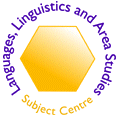
|
|
Practice Makes Perfect German
This a Beginner / Intermediate level program for learners of German. It includes over 2000 items of vocabulary with visual cues and memory aids. The Windows version also includes speech recognition, comparing your pronunciation with that of a native speaker. I have looked at the software with a view to assessing its suitability for undergraduates and evening class participants at a university Language Centre. The program is generally straightforward to use, with all options labelled and able to be selected at the click of a mouse button. A thorough but concise instruction manual is provided. The sign-in screen enables all users to record their name and maintain a record of the number of words they have learned. A wide range of vocabulary can be practised within the program, and the facility to record one's voice and hear it played back as a direct comparison to that of a native is certainly beneficial. The user's pronunciation is assessed in the form of a speedometer where the needle swings (sometimes quite alarmingly!) between tourist and native. In the preferences menu, accessible from the sign-in screen, the speech recognition can be adjusted between strict, normal and relaxed. At a normal setting, I was often surprised how the rating would vary from one extreme to the other. There are major faults in the speech recognition facility when trying the vocabulary test. I would hear an item of vocabulary in English and record my German translation. Sometimes I would get the noun totally wrong but the article (der, die or das) correct and be credited with a right answer. On another occasion, I gave my answer as keine Ahnung (no idea) and was also given credit for a correct response! Even as an experienced user of German I was able to learn new vocabulary from the software's extensive library, but, as mentioned above, there is certainly much room for improvement in the speech recognition for testing a user's progress. Colin Perry formerly University College London |
 |
 |